APS-C
Latest

Nikon Z50 review: A great handling camera with a mediocre sensor
Today's camera landscape is ultra-competitive and not terribly lucrative, so it takes a lot of guts to launch a new system. Nikon has done that (again) with the 20.9-megapixel Z50, its first ever APS-C mirrorless camera. Unlike rival Canon, Nikon decided to use the same Z mount lens system for both its full-frame and APS-C mirrorless cameras, a decision that has been surprisingly controversial. Nikon doesn't have the luxury of slowly perfecting its mirrorless lineup like Sony did five or six years ago. The market is mature now and the Z50 is going up against formidable models in its price range, including Sony's A6400, the Canon M6 Mark II and Fujifilm's X-T30. In an early hands-on look, I was impressed by the Z50's ergonomics and its petite size. Now, let's see how it stacks up against the competition in the crucial areas of autofocus, image quality and 4K video features.
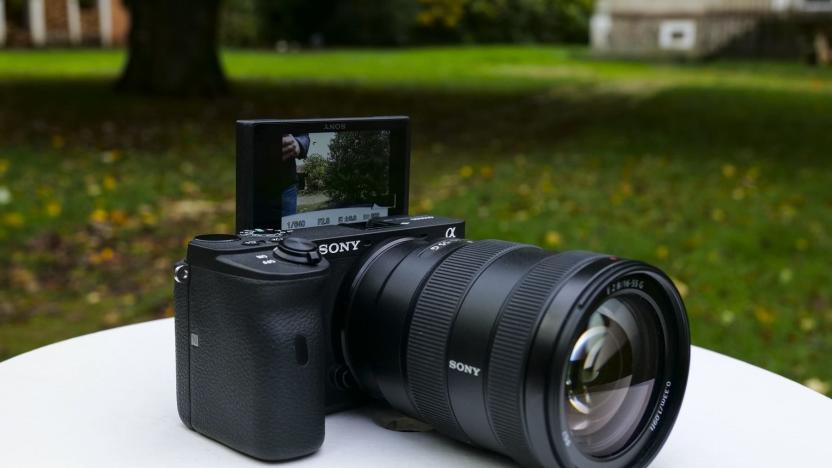
Sony A6600 review: A rare misstep for Sony's cameras
As Sony's new flagship APS-C camera, the 24.2-meagpixel A6600 has a lot to live up to. First of all, it had to follow the A6500, launched in 2016 with innovative features like 4K 30 fps video, fast 11 fps shooting speeds, in-body stabilization and face- and eye-tracking. For a couple of years, nothing else on the market could touch it. What's more, the A6600 arrived just after Sony's 61-megapixel A7R IV full-frame mirrorless camera -- possibly the best camera I've ever seen. From a competition standpoint, Sony is also under pressure to top Fujifilm's X-T3, which has a higher-resolution sensor, more 4K video features and much better handling than the A6500. The A6600 has in-body stabilization, a key feature that its rivals lack, and packs other promising features like a bigger grip and battery, along with improvements to its famous AI-powered autofocus system. However, Sony did not upgrade the three-year old sensor. Can it can hold its own against its full-frame stablemates? Can it beat the X-T3?

Canon M6 Mark II review: Incredible performance from a flawed flagship
The newest addition to the Canon lineup is the EOS M6 Mark II APS-C mirrorless camera, proving that the company isn't just about full-frame EOS R cameras. The M6 II is now the flagship in the EOS-M series, replacing both the M5 and M6 models. The most impressive part of the M6 II is the all-new 32.5-megapixel sensor, making it the highest-resolution crop-sensor camera you can buy. It also delivers some of the fastest shooting speeds I've seen on any mirrorless camera. And to keep those shots sharp, you get updated autofocus tech with Canon's impressive Dual Pixel system, along with face- and eye-detection. Unlike the previous M6 model, it delivers full-sensor, rather than cropped, 4K, making it more useful for videoographers and vloggers. It's priced competitively with rival models like Sony's A6400, the Fujifilm X-T30 and Nikon's first-ever APS-C mirrorless model, the Z 50. However, despite the impressive specs, the M6 Mark II is also hobbled by the lack of some key features.
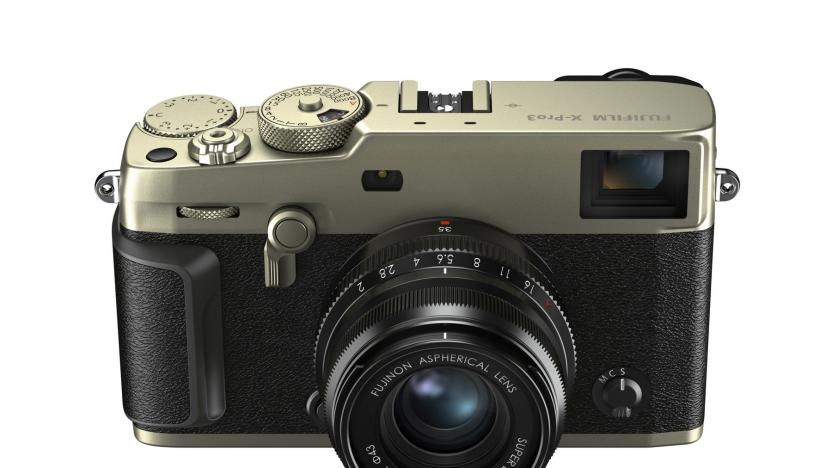
Fujifilm's X-Pro3 can focus in almost complete darkness
Fujifilm has officially unveiled the X-Pro3, the latest in its esoteric X-Pro lineup aimed at street photographers and photojournalists. Teased last month, it has a number of eccentric features, including a 3.5-inch, 1.65-million dot rear display that you can't even see without flipping down. Otherwise, it only shows the shutter speed, aperture and other basic information, or the film simulation if you're using one. The idea is to free the photographer from distractions and help them "stay in the moment," as Fujifilm puts it. "With your mind and your eye always on the scene in front of you rather than the scene you've just shot, you can find a connection not just with your subject, but also with your art," the company wrote in a press release.

Hands-on with the Z 50, Nikon's first mirrorless APS-C camera
Nikon has unveiled its first-ever APS-C DX mirrorless camera, the 20.8-megapixel Z 50. That makes two different camera systems launched a year apart, which is quite a pace for a conservative company like Nikon. The Z 50 is less than half the price of the Z 6, so it should appeal to a broader market, especially folks who already own Nikon DSLR lenses. Nikon now has both full-frame and crop sensor mirrorless systems, just like its rivals Canon and Sony. Just over a year ago, it essentially had zero, not counting the moribund Nikon 1. The company decided to follow Sony's lead by using the same mount for both systems to allow for lens compatibility and because the large diameter allows it to build sharper glass, according to a Nikon spokesperson. Meanwhile, Canon uses two different mirrorless mounts (EOS R and M mount) that aren't compatible with each other.

Canon unveils the EOS M200 with 4K video and eye-detect AF
Canon has unveiled the entry-level EOS M200 mirrorless camera, a successor to the popular EOS M100 with some interesting new features. While it retains the same 24.1-megapixel APS-C sensor as the last model, it has an updated Digic 8 processor. That extra power unlocks two important new features: Dual Pixel eye-detect autofocus and 4K, 24p video (with a big caveat).
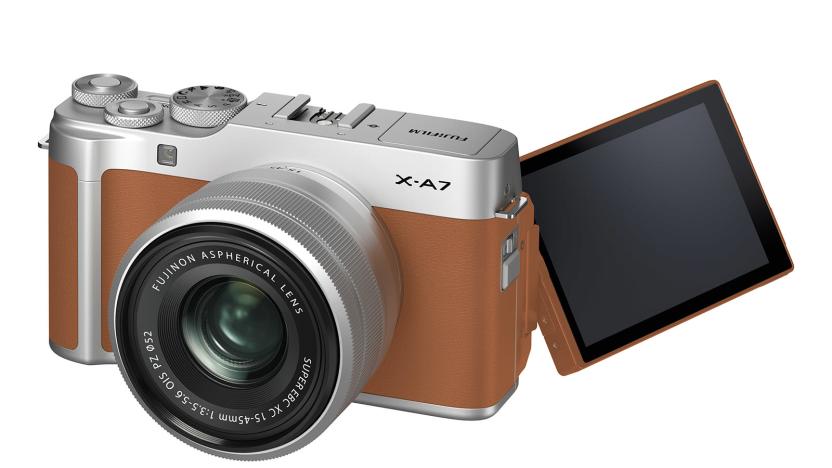
Fujifilm's entry-level X-A7 comes with 4K video and face detection
Fujifilm has unveiled the entry-level X-A7 with some key new features that make it a nice upgrade over its predecessor, the X-A5. It packs Fujifilm's latest 24.2-megapixel CMOS sensor and has 8.5 times as many phase-detect pixels as its previous entry-level model, the X-A5, for starters. That gives it much faster autofocus speeds and quick face detection, though burst shooting speeds remain at 6 fps.
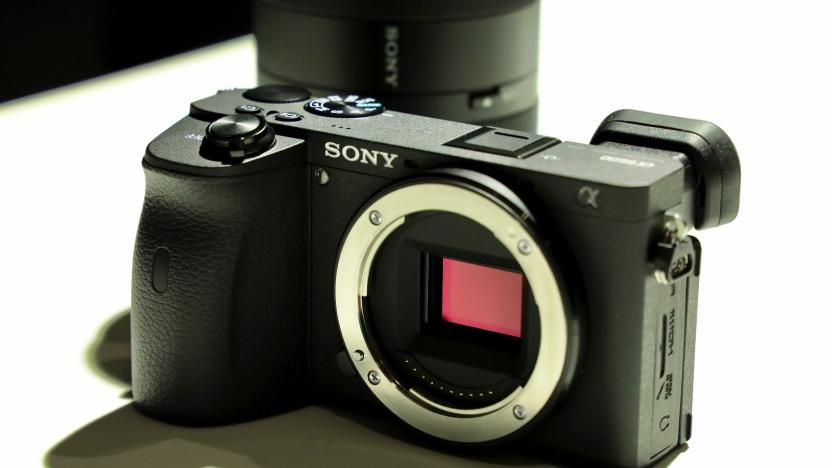
A first look at Sony’s A6600 flagship APS-C mirrorless camera
Canon isn't the only one introducing new cameras today. At an event in New York City, Sony has revealed its A6600 and A6100 shooters, the latest additions to its APS-C mirrorless lineup. Of the two, the flagship model is the A6600, which features a 24.2-megapixel APS-C sensor, an AI-powered Z-Bionz image processor, 425 phase-detection autofocus points and a ridiculously fast 0.02-second AF speed -- which Sony calls the "world's fastest." The A6100, meanwhile, comes with the same autofocus speed, 11-frames-per-second continuous shooting mode and 24.2-megapixel sensor as as the A6500, with the main differences being that it has a smaller battery and lacks a headphone port.
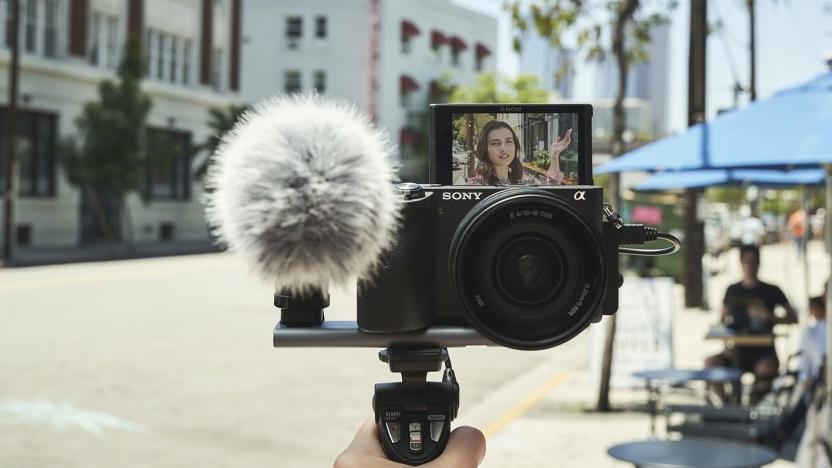
Sony's A6600 APS-C flagship is a shooting speed demon
Sony has finally revealed the much-anticipated 24.2-megapixel Alpha A6600, its new flagship APS-C mirrorless camera and follow up to the popular A6500. The new model is all about speed and video performance, powered by Sony's latest sensor and AI-powered Z-Bionz image processing tech. It can grab focus in just .02 seconds, allowing shooting speeds of 11 fps with continuous autofocus turned on, beating any other APS-C mirrorless camera.

Canon leaks its EOS 90D DSLR and mirrorless EOS M6 Mark II cameras
Canon's Australian website appears to have accidentally leaked a pair of important new cameras, the EOS M6 Mark II mirrorless and EOS 90D DSLR. Promo videos for the cameras spotted by Canon Rumors (and quickly pulled by Canon) show impressive specs for the two mid-range models. Both feature all-new 32.5-megapixel APS-C sensors, 4K video at up to 30 fps with 120 fps full HD, and Dual Pixel autofocus with eye detection.

Fujifilm X-T30 review: A street photography and 4K-video champ
Amid all the drama in the full-frame mirrorless camera world, Fujifilm quietly unveiled the world-beating APS-C sensor X-T3, last fall. With an all-new 26.1-megapixel X-Trans 4 backside-illuminated (BSI) sensor, it was a major improvement on the X-T2 in speed, autofocus capability, ergonomics and, especially, video. Then, to further press its advantage on Sony, Fujifilm subsequently launched the X-T30 with the same sensor and image quality as the X-T3, for $600 less. Despite that price gap, the X-T30 is packed with features. It has full APS-C 4K video, shooting speeds up to 30 fps and AI-powered face- and eye-detection autofocus. All of that is squeezed into a lightweight, well-designed body that's ideal for travel and street photography. You can't have everything, though, so the X-T30 is missing some features found on its higher-end sibling. To find out how it would fare against rivals, like Sony's A6400, I took it for a spin on the streets of Paris.

A brief history of mirrorless cameras
Mirrorless cameras are here to stay. The argument to own one isn't only about them being small and lightweight anymore, because nowadays many mirrorless shooters rival DSLRs in image quality -- something that would've been unimaginable a decade or so ago. Today, the likes of the Sony A7 III, Nikon Z7, Canon EOS R and Panasonic S1R are some of the best cameras, period. But none of these flagships would exist today if it weren't for the hundreds of Micro Four Thirds and APS-C models that came before them, some of which are still popular and have paved the way for manufacturers to turn photographers and videographers alike into mirrorless fans.

How to buy a mirrorless camera in 2019
You can mark down 2019 as the year that mirrorless cameras vaulted to the top of photographers' wish lists. They sold nearly as well as DSLRs in 2018, thanks largely to Sony, and may outsell them for the first time in 2019. That's because the number available exploded at the end of 2018 and most of the important new cameras are mirrorless models. All of them have improved autofocus tech, better electronic viewfinders and excellent 4K video features. Nikon, Canon and Fujifilm are determined to cut into Sony's market share, so they all released new models -- to various degrees of critical acclaim. And it's working: Where Sony once had 99.5 percent of the full-frame mirrorless market in Japan, for instance, its share has dropped to 60 percent. More choice is terrific, but it does make your buying decision more difficult, which is why we're here. Our deep and detailed camera guide, dedicated to mirrorless models, will help you sort out which one that suits you best, depending on your needs and budget.

Sony A6400 camera review: Definitely not a vlogger's dream camera
Sony's 24.2-megapixel A6400 APS-C camera was a surprise, filling a gap between the A6300 and A6500 that didn't really need to be filled. Both in how it looks and the technology inside, it didn't seem like a great leap over the A6300. It also lacks important features (like in-body stabilization) found in the A6500. However, with 4K video, a pop-up screen, a microphone jack and reasonable $900 price tag, I thought it might make a great poor-man's vlogging camera.

Fujifilm’s X-T30 shrinks the X-T3 in size and price
Fujifilm continues its effort to conquer the APS-C mirrorless market with the launch of the $899 X-T30, a slightly stripped down version of the X-T3. It's much improved over its predecessor, the X-T20, with the addition of a focus joystick and touchscreen. On top of that, it shares the X-T3's 26.1-megapixel X-Trans CMOS 4 BSI (backside-illuminated) sensor and quad-core X-Processor, bringing better resolution and faster shooting speeds. It has a similarly classy, but much smaller body that weighs just 383 grams (0.89 pounds), compared to 539 grams for the X-T3.
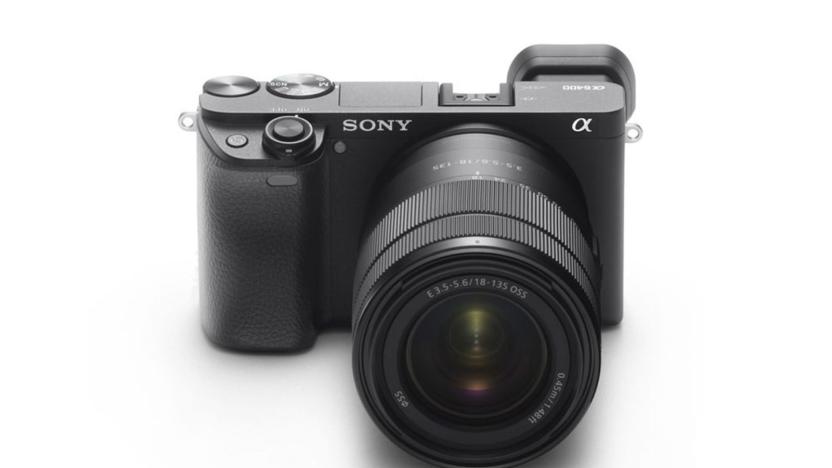
Sony's mid-range A6400 mirrorless camera is ideal for vloggers
Sony has boosted its mid-range APS-C lineup with the launch of the 24-megapixel A6400 mirrorless camera. It looks much the same as its predecessor, the A5100, but has much-improved specs and should be especially ideal for vloggers, thanks to 4K 30fps video and a flip-up touch screen. The A6400 is also getting a bunch of features from its full-frame A7 III and A9 siblings, like 425-point contrast- and phase-detect autofocus with the "world's fastest" .02 second AF speed, along with real-time subject tracking and eye AF.

Fujifilm X-T3 review: An X-Series camera that gets video right
Fujifilm's X-T3 sure looks a lot like the X-T2, but don't be deceived. Aside from the handsome, compact body, this is a smarter, more capable mirrorless camera in almost every way. It's got a higher-resolution sensor, much improved autofocus and tons more speed. Plus, thanks to the addition of 10-bit recording and other tweaks, it's now the best APS-C camera on the market for video (sorry, Sony A6500). I've been using the camera for the last few weeks in and around Paris, taking both photos and video. Despite the high price and some deep competition, I feel it's worth the cost and then some. The X-T3 isn't perfect -- it's nearly as costly as Sony's A7 III and there's no in-body stabilization (IBS) -- but it's Fujifilm's best camera yet.
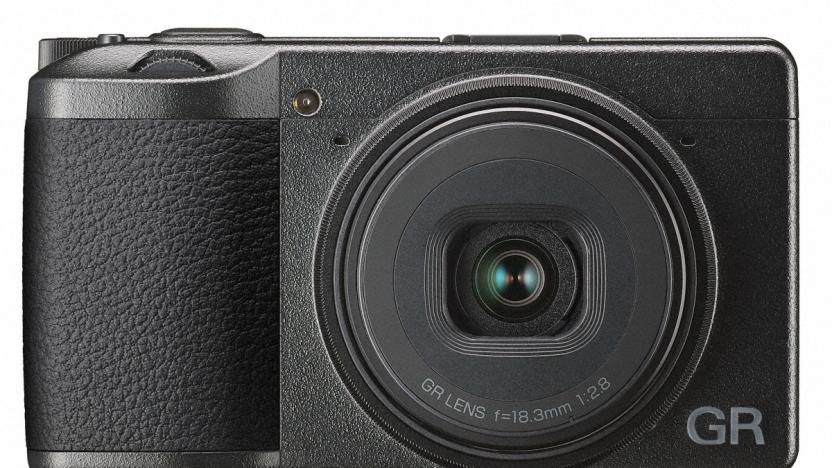
Ricoh adds a new lens and sensor to its lightweight GR III
Richoh's GR series is notable for combining its small, lightweight frame with a large APS-C sensor that the company claims makes it "the ultimate street photography camera." However, after a GR II refresh in 2015 to add WiFi and NFC, some of its features have lagged behind the latest camera technology available. Today at the Photokina event we're meeting the GR III which adds a "newly designed lens, image sensor and imaging engine" to the mix that should keep it as a competitive option at sub-$1,000 prices. We only have a single picture to judge by, but the design doesn't appear to have changed from its previous model The sensor has been upgraded from 16 MP to 24.2 MP, it has a USB-C connection and there's a new software interface to make it easier to use. It will be available in early 2019, but so far there's no word on exactly how much it will cost.
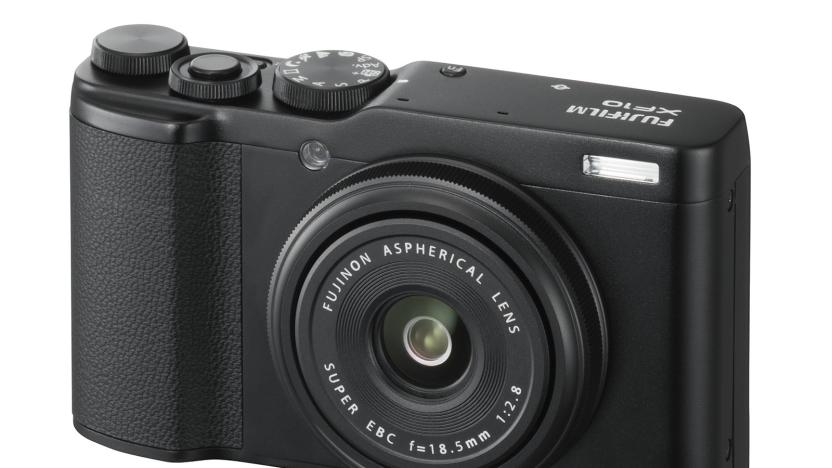
Fujifilm's oddball XF10 fixed-lens APS-C camera costs only $500
Fujifilm has proven again that it's not afraid to build unusual cameras by unveiling the XF10, a premium fixed-lens compact that will be the successor to the X70 compact. It's got a wide-angle 18.5mm f/2.8 fixed lens (equivalent to 27.8mm in full-frame terms) and a 24.2-megapixel APS-C (not X-Trans) sensor that has significantly higher resolution than the last model. It's very compact, weighing just 280 grams, or about the same as Sony's new RX100 VI, which has a smaller 1-inch sensor. However, there's no EVF on it, so you'll need to rely on the 3-inch touchscreen to compose and replay your photos and video.
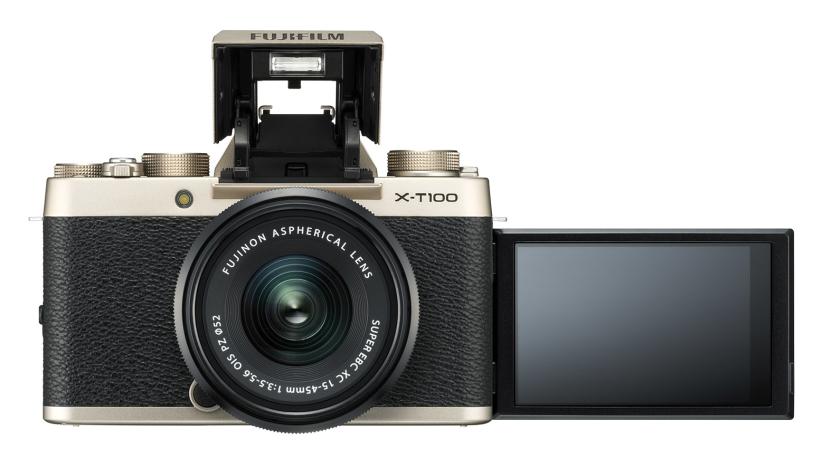
Fujifilm's entry-level X-T100 brings classic style for $600
Fujifilm has unveiled the X-T100, an interesting mirrorless camera that's quite similar, spec-wise, to the entry-level X-A5, but looks more like the X-T20. It's one of the few inexpensive mirrorless cameras out there with an electronic viewfinder, great for serious photographers on a budget. Unfortunately, it's not as great for video, as Fujifilm crippled the 4K by limiting it to 15 fps.


